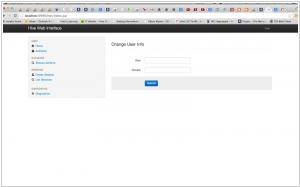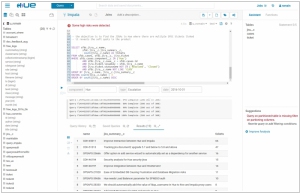Apache Hive vs Apache Impala
June 03, 2023 | Author: Michael Stromann
13

The Apache Hive data warehouse software facilitates querying and managing large datasets residing in distributed storage. Hive provides a mechanism to project structure onto this data and query the data using a SQL-like language called HiveQL. At the same time this language also allows traditional map/reduce programmers to plug in their custom mappers and reducers when it is inconvenient or inefficient to express this logic in HiveQL.
Apache Hive and Apache Impala are both open-source query engines designed for big data processing, but they have different architectures and performance characteristics.
Apache Hive is a data warehousing infrastructure built on top of Apache Hadoop. It provides a SQL-like interface called HiveQL, which allows users to query and analyze structured data stored in distributed file systems like Hadoop Distributed File System (HDFS). Hive converts HiveQL queries into MapReduce jobs or Apache Tez DAGs for distributed processing. Hive is optimized for batch processing and is well-suited for scenarios where data is stored in a schema-on-read manner. It supports schema evolution and provides a wide range of storage formats, making it suitable for large-scale analytics and data exploration.
Apache Impala, on the other hand, is a massively parallel processing (MPP) query engine specifically designed for interactive and real-time SQL queries on Hadoop data. It is optimized for low-latency and high-performance query processing. Impala bypasses the traditional MapReduce framework and directly executes queries on the underlying data using a distributed architecture. This allows Impala to provide much faster query response times compared to Hive for ad-hoc queries and interactive analytics. Impala is well-suited for scenarios that require fast query performance and real-time insights, such as business intelligence dashboards and exploratory data analysis.
See also: Top 10 Big Data platforms
Apache Hive is a data warehousing infrastructure built on top of Apache Hadoop. It provides a SQL-like interface called HiveQL, which allows users to query and analyze structured data stored in distributed file systems like Hadoop Distributed File System (HDFS). Hive converts HiveQL queries into MapReduce jobs or Apache Tez DAGs for distributed processing. Hive is optimized for batch processing and is well-suited for scenarios where data is stored in a schema-on-read manner. It supports schema evolution and provides a wide range of storage formats, making it suitable for large-scale analytics and data exploration.
Apache Impala, on the other hand, is a massively parallel processing (MPP) query engine specifically designed for interactive and real-time SQL queries on Hadoop data. It is optimized for low-latency and high-performance query processing. Impala bypasses the traditional MapReduce framework and directly executes queries on the underlying data using a distributed architecture. This allows Impala to provide much faster query response times compared to Hive for ad-hoc queries and interactive analytics. Impala is well-suited for scenarios that require fast query performance and real-time insights, such as business intelligence dashboards and exploratory data analysis.
See also: Top 10 Big Data platforms



